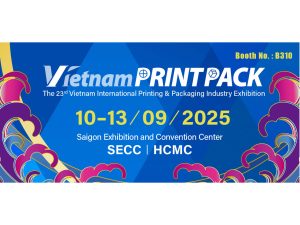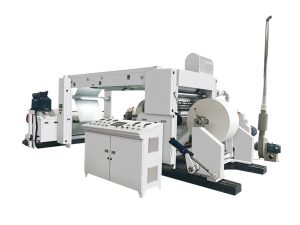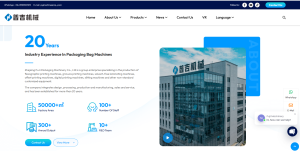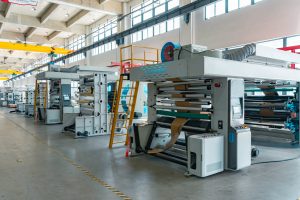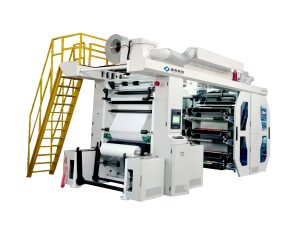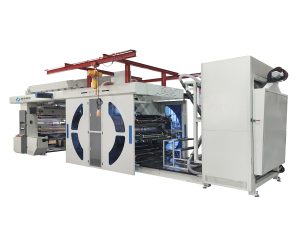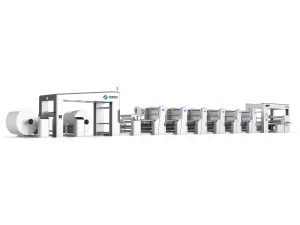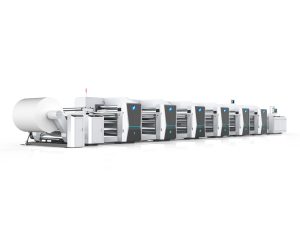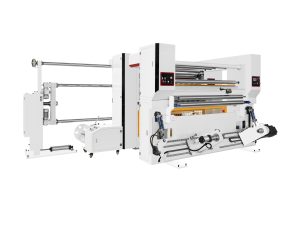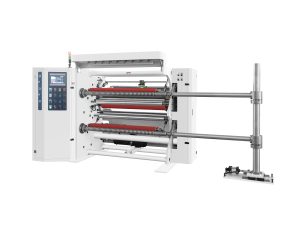In today’s packaging industry, sustainability is no longer optional—it’s a procurement priority. Global regulations, consumer demand, and ESG commitments are pushing brands to adopt eco friendly ink solutions in every part of their supply chain. For companies using flexographic printing machines, the choice of ink directly impacts carbon footprint, print quality, and brand reputation.
This blog explores the Top 10 Sustainable Inks for Flexographic Printing Machines, helping packaging converters and brand procurement teams identify the most suitable options for eco-friendly, high-performance printing.
Table of Contents
ToggleWhy Sustainable Inks Are Important for Flexographic Printing Machines
-
Compliance & VOC reduction: Traditional solvent inks emit volatile organic compounds (VOCs), making them less compatible with new environmental standards.
-
Brand value: Using sustainable inks for packaging boosts brand positioning with eco-conscious consumers.
-
Operational efficiency: Many modern eco friendly printer ink formulations improve press efficiency and reduce cleaning downtime.
Comparing Conventional vs. Sustainable Ink in Flexo Printing
| Ink Type | VOC Emissions | Substrate Range | Regulatory Compliance | Brand Value |
|---|---|---|---|---|
| Conventional Solvent Ink | High | Broad | Low | Negative |
| Sustainable Ink | Low to Zero | Broad | High | Positive |
1. Water-Based Inks – The Most Widely Used Eco Friendly Ink
If your business is serious about moving toward sustainable inks for packaging, the first step is eliminating solvent-heavy, petroleum-based formulations. Water-based inks are the proven alternative. They contain far fewer volatile organic compounds (VOCs), are made with simpler, safer ingredients, and are widely compatible with modern flexographic printing machines. Water-based inks are the most common eco friendly ink in flexographic printing.
As one of the oldest and most trusted forms of eco friendly printer ink, water-based inks have become the go-to solution for highly absorbent substrates like corrugated cardboard, kraft paper, and paperboard. They deliver excellent print quality without sacrificing sustainability, making them ideal for large-scale packaging converters.
For procurement teams, water-based inks also simplify operations and reduce costs tied to waste handling and compliance. Plus, they’re:
-
Easy to clean → Less downtime on flexographic printing machines
-
Simple to store → Safer handling and reduced facility risk
-
Highly compatible → Work seamlessly with elastomer image carriers and common packaging substrates
👉 For brands and converters, adopting water-based ecological ink isn’t just a green decision—it’s a smart operational upgrade that boosts both compliance and efficiency.
2. Soy-Based Inks – Renewable and Brand-Friendly
If you’re looking for an ink that’s both eco friendly and a strong branding asset, soy-based inks are a great choice. Made from soybean oil instead of petroleum, these inks are fully renewable and deliver vibrant color quality.
They’re popular in food, beauty, and retail packaging, especially for brands that want to advertise their commitment to sustainability. Plus, they’re:
-
Highly renewable and biodegradable
-
Excellent for producing sharp, vivid colors
-
Marketable with “Printed with Soy Ink” labeling
3. Algae-Based Inks – The Future of Ecological Ink
For companies aiming to be early adopters of breakthrough technology, algae-based inks stand out. Derived from algae cells, these inks are carbon-negative and biodegradable—making them a powerful option for brands with aggressive ESG goals.
They’re an exciting choice for premium packaging and innovation-driven sectors. Plus, they’re:
-
Completely renewable and biodegradable
-
Carbon-negative, helping reduce footprint
-
A powerful differentiator in the sustainability market
4. Vegetable Oil-Based Inks – Flexible and Eco-Safe
Vegetable oil-based inks (like linseed, safflower, or canola) are another petroleum-free option for flexo printing. They provide excellent adhesion across a range of substrates and strike a good balance between sustainability and performance.
These inks are common in labels, paper wraps, and flexible packaging. Plus, they’re:
-
Derived from renewable oils instead of fossil fuels
-
Safer and more sustainable for everyday packaging
-
Versatile across different substrates
5. UV-Curable Inks – Sustainable with Energy Savings
UV-curable inks are designed for fast-paced flexographic printing machines. Instead of air-drying, they cure instantly under UV light, cutting down energy consumption and production time.
They’re especially valued in food-safe and industrial packaging. Plus, they’re:
-
Low in VOCs compared to traditional solvent inks
-
Durable and resistant to abrasion and chemicals
-
Energy-efficient thanks to instant curing
6. Electron Beam (EB) Inks – Next-Gen Eco Printing
EB inks are often seen as the “future of flexo printing.” They use electron beams to cure, meaning no solvents or photoinitiators are required. This reduces waste and ensures safer packaging for food and pharmaceuticals.
They’re especially appealing for high-volume converters. Plus, they’re:
-
100% solvent-free curing
-
Compliant with strict food and pharma packaging standards
-
Reliable for large-scale, high-speed printing
7. Biodegradable Inks – Designed for Circular Packaging
For companies pursuing zero-waste or compostable packaging, biodegradable inks are a perfect fit. They break down naturally without leaving harmful residues.
They’re a strong choice for foodservice, e-commerce, and FMCG packaging. Plus, they’re:
-
Fully compostable and eco safe
-
Ideal for single-use or short-lifecycle packaging
-
Align with circular economy goals
8. Hybrid Water + UV Inks – Best of Both Worlds
Hybrid inks combine the eco benefits of water-based inks with the performance of UV curing. This makes them a reliable option for companies handling diverse substrates and short production cycles.
They’re ideal for converters serving multiple industries. Plus, they’re:
-
Lower VOC compared to solvent inks
-
Faster drying and stronger adhesion than water-based inks alone
-
Balanced between cost, speed, and sustainability
9. Mineral-Free Inks – Safer for Food Contact Packaging
Mineral-free inks eliminate heavy metals and mineral oils, making them highly compliant with FDA and EU food safety standards. This makes them especially critical for brands in food, pharma, and baby product packaging.
They’re a safe choice for sensitive markets. Plus, they’re:
-
Free from toxic heavy metals
-
Designed to meet global regulatory requirements
-
Safe for food contact and pharmaceutical packaging
10. Custom Sustainable Inks – Tailored for Flexographic Printing Machines
Not every business can rely on “off-the-shelf” solutions. Today, many ink manufacturers provide customized sustainable ink formulations designed for specific substrates, machine speeds, or compliance needs.
For procurement teams, this is a chance to future-proof their operations. Plus, they’re:
-
Tailored to unique machine and packaging requirements
-
Available for testing and trial runs
-
Ideal for companies with strict compliance or performance goals
Conclusion
As global packaging trends shift toward eco responsibility, procurement teams cannot afford to ignore the role of sustainable inks. From water-based and soy-based inks to cutting-edge algae-based and EB inks, the options available for flexographic printing machines are now broader, higher performing, and more compliant than ever.
✅ Choosing the right eco friendly printer ink not only reduces costs but also enhances your brand’s market credibility.
👉Need help choosing or managing the right ink for your flexo press? Contact PuJi Machinery, your trusted partner in flexographic ink solutions.




